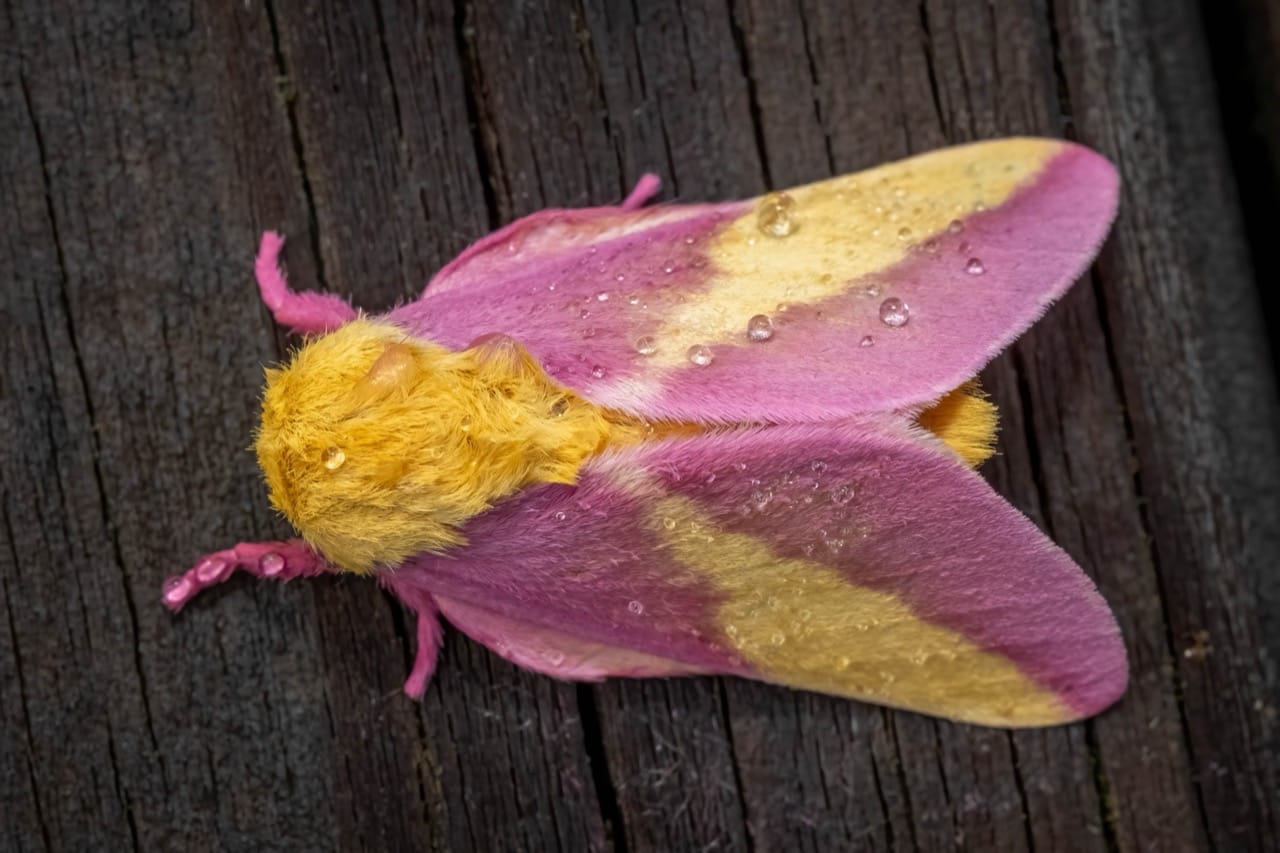Imagine a creature so vividly colored it seems to have sprung from a painter’s palette. The Rosy Maple Moth, with its soft pink and yellow hues, is not just a delightful sight but also a fascinating subject of study in the lepidopteran world. This moth, a native to North America, is as intriguing in its behavior as it is beautiful in appearance, offering a unique glimpse into the rich tapestry of moth biodiversity.
Characteristics / Physical Description
The Rosy Maple Moth (Dryocampa rubicunda) is easily recognized by its striking coloration. The adults typically feature wings of a soft pink at the bases and tips, with a vibrant yellow band running across the middle. The body is fluffy and yellow, complementing the wings. These moths have a relatively small wingspan of about 32 to 50 mm. Their antennae are feathery in males, which is a common trait among many moth species used to detect pheromones released by females.
Taxonomy and Classification
Dryocampa rubicunda belongs to the family Saturniidae, which includes some of the largest and most spectacular moths in the world. Within this family, the Rosy Maple Moth is part of the subfamily Ceratocampinae, known for their bright colors and often substantial size, although the Rosy Maple Moth is on the smaller end of the scale in this group.
Behavior and Social Structure
Rosy Maple Moths are primarily nocturnal, like many moth species. They are not particularly social insects, although they can be seen in groups during the mating season. Males are attracted to females through the pheromones she emits, leading to a fascinating dance around the potential mate, which is a common mating behavior among moths.
Habitat and Distribution
This moth is predominantly found in the eastern regions of North America, from Canada down through the eastern United States, favoring environments where the maple trees – the primary food source during the larval stage – are abundant. They thrive in wooded areas and suburban regions that contain their host plants.
Diet and Feeding Habits
The caterpillars of the Rosy Maple Moth feed exclusively on the leaves of maple trees, particularly those of the red and silver maple varieties. The adults, however, do not feed at all; their mouthparts are atrophied, so their life span as adults is dedicated solely to reproduction.
Breeding and Reproduction
The life cycle of the Rosy Maple Moth begins anew when the female lays her eggs on the underside of the host maple leaves. These eggs hatch into vibrant green caterpillars, which will eat and grow until they are ready to pupate. The pupation occurs in the soil beneath the trees, where the caterpillar forms a cocoon and undergoes metamorphosis into the adult moth.
Relationship with Humans
Rosy Maple Moths, due to their attractive appearance, are often beloved by nature enthusiasts and photographers. They pose no threat to humans and are not considered pests, although in large numbers, the caterpillars can defoliate ornamental maple trees.
Evolutionary History
The Saturniidae family, to which the Rosy Maple Moth belongs, is believed to have evolved alongside flowering plants, primarily because these insects are highly dependent on them not just for food but also for reproductive sites. Their vibrant colors and patterns are thought to be an evolutionary trait to deter predators by mimicking more dangerous species.
Use as Research Animals
Although not commonly used in research, Rosy Maple Moths can serve as a model organism in studies related to moth development, particularly metamorphosis, and the ecological impacts of deforestation on moth populations.
In the vibrant flutter of its wings, the Rosy Maple Moth not only adds a splash of color to the night but also contributes to the ecological balance by participating in the pollination of many types of flora. Its presence is a reminder of the beauty and complexity of our natural world.

